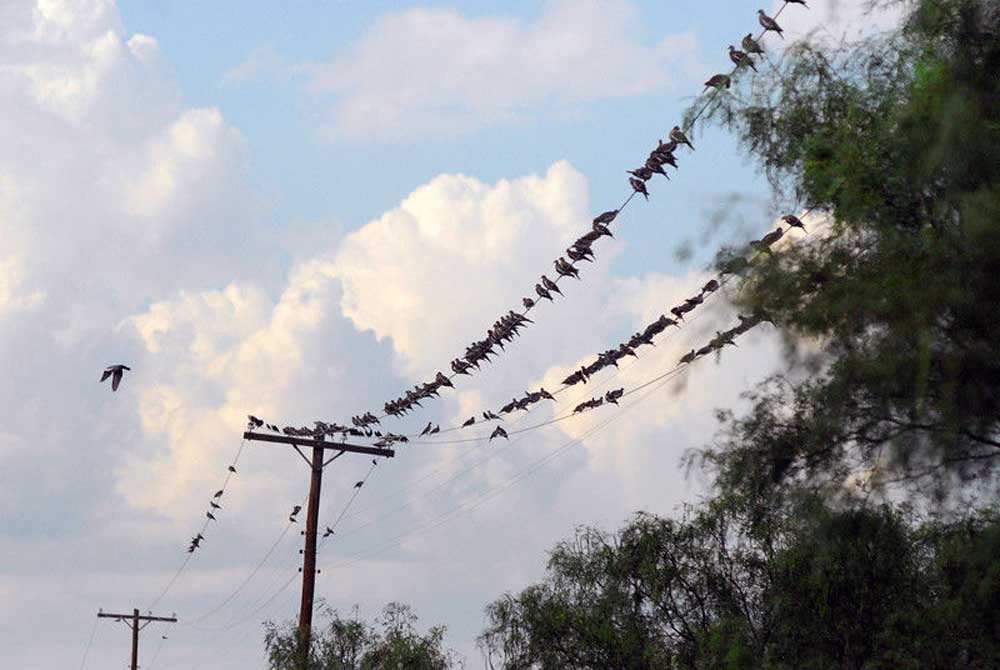Off And Running
Published 6:47 am Monday, September 12, 2016

- STEVE KNIGHT/TexasAllOutdoors.com DOVE HUNTERS IN north-central Texas had to dodge thunderstorms the first weekend, but that did not stop the hunting or the success for most.
COLEMAN – Plan A disappeared in a thunderstorm that blew through about 11 p.m. the night before dove season opened.
Plan B, it was washed away in a storm that hit about 4 a.m. and was still dumping rain on the field when the 20 hunters on the Tyler Paper/TexasAllOutdoors.com hunt were getting up.
That left Plan C, an 80-mile run one way to a sunflower over wheat field between Cisco and Breckenridge.
It was worth the jog.
When we pulled across the cattle guard birds were already flocking into the field in bunches of five and 10. We were late. The sun was already peeking through the clouds forming to the east around Fort Worth, a warning that more rain was on the way. Everyone was in hurry-up mode just in case it got there quicker than expected.
The hunters quickly circled the field and pitched their gear out. Some had not even gotten back from parking their trucks before others were filling their bags.
In this field there was no rhyme or reason as to where the dove were coming from. All mourning doves, they came from every direction and for some odd reason they came in low. Dipping and diving they flew just above the sunflowers before find a place to sit down.
It did not feel like a normal opening day in north-central Texas. The 70-degree temperature was a nice departure from dove season openers in the near past when daily highs hit triple digits.
The first limit was down within 20 minutes of the first shot, five others also had limits before the morning flight slowed and another storm showed up on radar headed directly to the field.
Everyone had gotten enough shots for a good start, and there was an afternoon hunt to go.
Outfitter Dusty Greaves of Lone Star Outfitters has had a fit with rain all summer. Although it is difficult for a rancher to complain about rain, it has made it difficult to get fields ready for hunting. Some he had difficulty getting into to shred. Others had fallow wheat that farmers were unable to harvest last year because of mud. With the rain they were reseeding under the wheat stalks and sunflowers.
It was a mess and had him concerned about opening day prospects even with fields scattered for miles around the region.
Then came rain off and on the days leading up to the season. Mourning doves only need a cold rain to begin their migration southward, and that was a concern.
The plan for the first afternoon was to let those who had not limited in the morning to hunt a field on the sprawling ranch that afternoon. It was cool and overcast so an early start was recommended, but again the rains came just as everyone was getting in their trucks.
The hunters slogged their way down the muddy ranch road and into the field only to have the skies really open up. It was backed by thunder and lightning, a bad combination for hunters in the field with guns.
Some went back to camp while others waited out the storm, and when the rain stopped the birds came by flocks into the field. Whitewings were on the east side. Mourning doves were on the west. Eurasian collared doves were scattered in among both. It was one of those shoots where those who limited that morning wished they were still in the game.
The sun stayed out just long enough for most to finish their daily bag of 15 birds, but not long enough for everyone to make it back to camp dry. The clouds returned and when they did they soaked everything in minutes.
Rain was again forecast for Day 2 and the weatherman did not disappoint. This time, however, Greaves was not looking at any alternate plans. Even if he had it would not have mattered because the entire area was soaked.
Greaves was sending the hunters to Abilene and a field that before the rains came had been feeding more than maybe as many as 10,000 birds each morning.
The caravan pulled out in a drizzle and made the 30-something mile drive. Once there it was too wet to pull into the massive field. Hunters would have to be put out using ATVs and it was a process that was continuing after legal shooting hours.
In the misty, low-light conditions it was like shooting at mosquitoes, which were horrible in the field. Like the morning before the dove came in low, doing their aerial acrobatics looking for a place to land and feed.
From two corners the shooting was constant. In between it was good to real good, depending on where you were standing. A move 20 yards one way or another made a world of difference.
It was quickly clear the birds were not in the field like they had been just a week or two earlier. Whether they had migrated or shifted feeding areas because of the rain or just were not coming to feed that morning no one knows. And, it did not matter.
Despite the ongoing light mist, some hunters were done in 30 minutes. Unlike the morning before, though, just about everyone walked out of the field with a limit or near-limit before calling it a morning.
It was tough going, but the results were a lot better than some areas where muddy, wet and messy were themes of the early season. From Austin to the north the rains started a week or two before the season and continued through the first weekend. It had an impact and created hunting as one outfitter would say that was hot, but not chili red hot.
Dove hunters have an extra 20 days to hunt this season. The season in the North Zone runs through Nov. 13 and then Dec. 17 to Jan. 1, 2017.In the Central Zone it continues until Nov. 6 and then Dec. 17 to Jan. 8, 2017. It will open in the South Zone Sept. 23 to Nov. 13 and Dec. 17 to Jan. 23, 2017. The second weekend in the Special White-winged Dove Area of South Texas Saturday and Sunday, and then the regular season opens Sept. 23 to Nov. 9, Dec. 17 to Jan. 23, 2017.
The daily bag limit for doves statewide is 15 and the possession limit 45.







